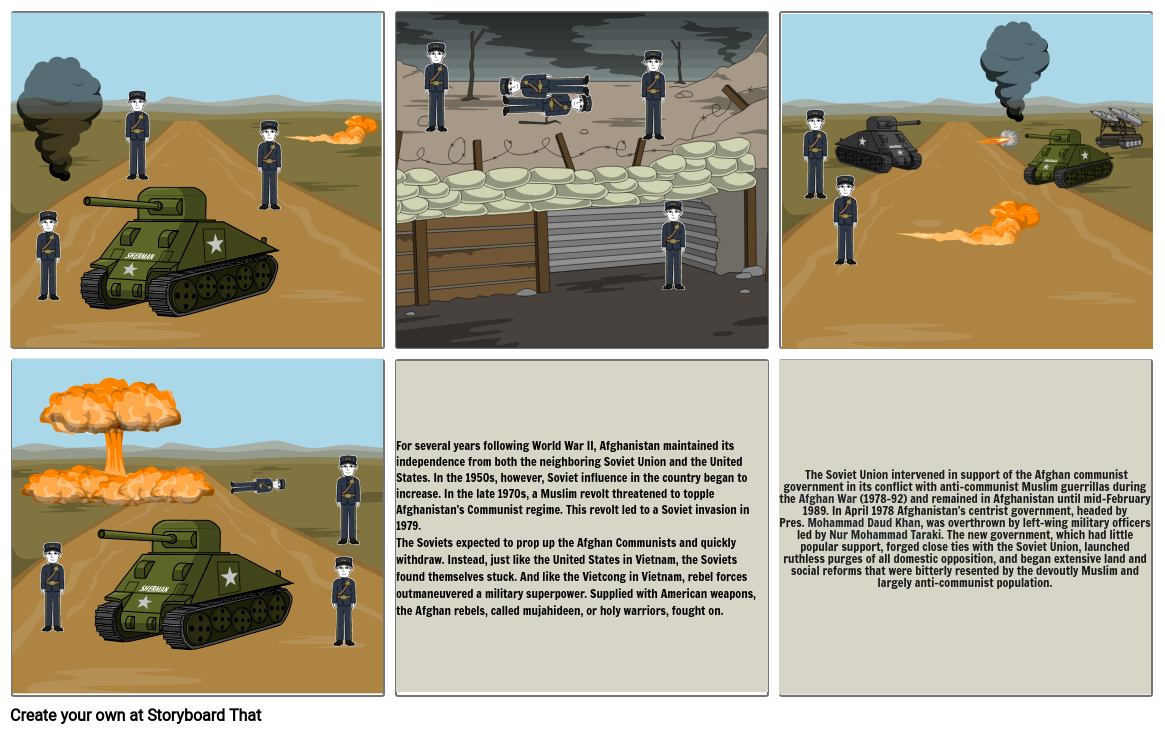cold war hot spots

Kuvakäsikirjoitus Teksti
- For several years following World War II, Afghanistan maintained its independence from both the neighboring Soviet Union and the United States. In the 1950s, however, Soviet influence in the country began to increase. In the late 1970s, a Muslim revolt threatened to topple Afghanistan’s Communist regime. This revolt led to a Soviet invasion in 1979.The Soviets expected to prop up the Afghan Communists and quickly withdraw. Instead, just like the United States in Vietnam, the Soviets found themselves stuck. And like the Vietcong in Vietnam, rebel forces outmaneuvered a military superpower. Supplied with American weapons, the Afghan rebels, called mujahideen, or holy warriors, fought on.
- The Soviet Union intervened in support of the Afghan communist government in its conflict with anti-communist Muslim guerrillas during the Afghan War (1978–92) and remained in Afghanistan until mid-February 1989. In April 1978 Afghanistan’s centrist government, headed by Pres. Mohammad Daud Khan, was overthrown by left-wing military officers led by Nur Mohammad Taraki. The new government, which had little popular support, forged close ties with the Soviet Union, launched ruthless purges of all domestic opposition, and began extensive land and social reforms that were bitterly resented by the devoutly Muslim and largely anti-communist population.
Yli 30 miljoonaa kuvakäsikirjoitusta luotu

